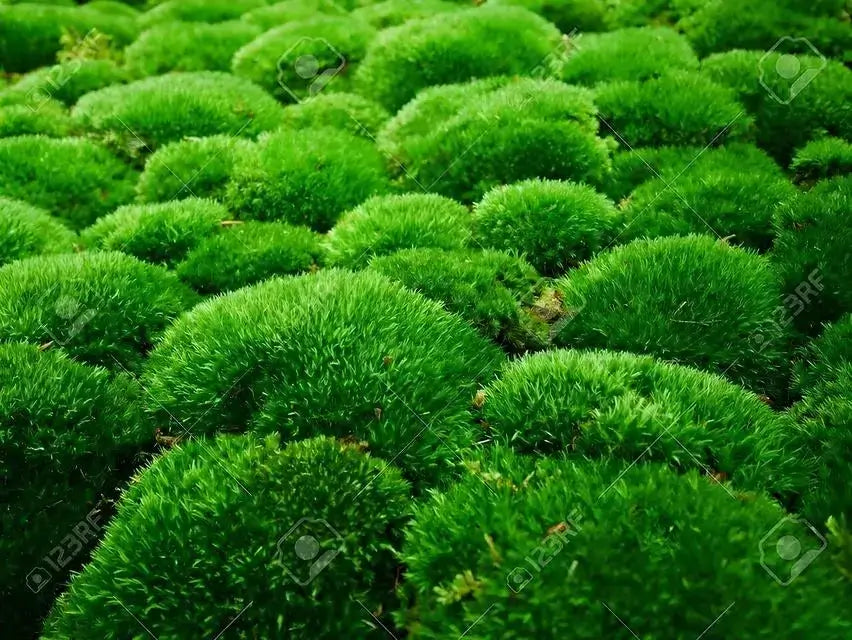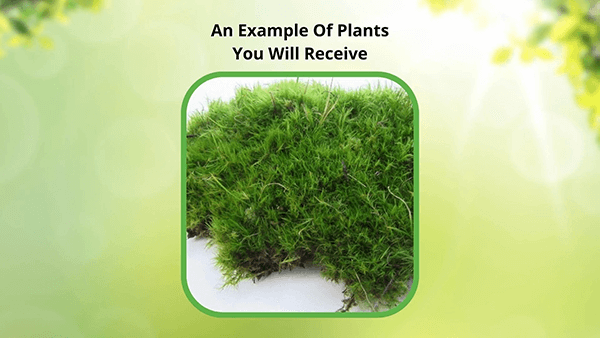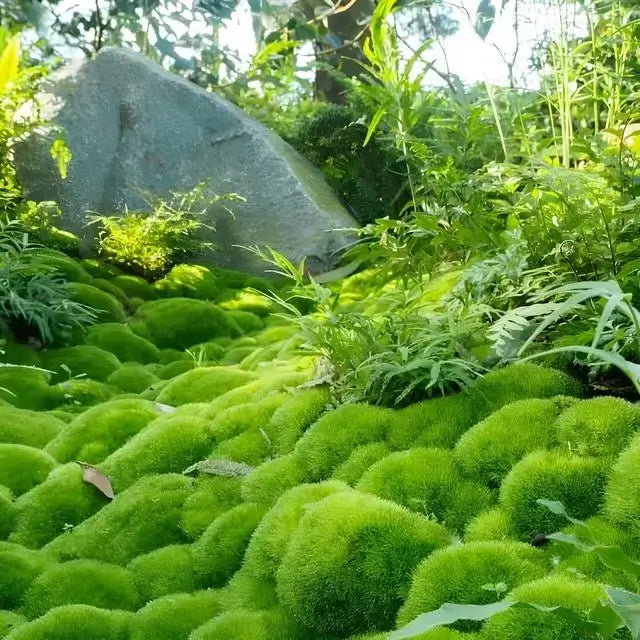Cushion Moss | Leucobryum Glaucum
Cushion Moss is the lovely, lush, and pillowy green moss you may find on rocks while hiking your favorite trails. This plant is a big fan of shady, moist environments and is a companion found often in shade landscapes.
The mounding effect of this plant is breathtaking and adds a bunch of whimsy when cultivated in gardens. Its stout leaf blades can range from deep green to a bright white, adding a layer of spiky texture. The mounds can be grown into perfect circles, or into intriguing shapes as they slowly spread to fill in the gaps around.
Plant Details - Cushion Moss
Family: Leucobryaceae
Light Requirement: Partial Shade - Full Shade
Water Needs: Moderate - High
Height: 2-4 in.
Spread: Forms dense clumps up to 12 inches wide or more
Growth Rate: Slow - Moderate
Wildlife Value: Retains beneficial moisture, provides habitats for microscopic creatures
This plant is a steady, slower grower with a horizontally spreading habit. The leaves are extremely dense and short, only a few millimeters long, and are what give the plant a unique appearance and texture. Being a moss, it has a unique root structure known as a rhizoid. Instead of a normal root system, which burrows into soil to deliver nutrients to the plant, rhizoids are shallow and simply anchor the plant to the surrounding surface or substrate.
Because of the short roots, the area must be sufficiently moist at all times to ensure a constant water source.
Landscape Uses and Maintenance - Cushion Moss (Leucobryum Glaucum)
This plant has a high preference for acidic, sandy soils and requires a consistent source of moisture. Other than that, it is not picky. This plant is known for having the ability to regrow itself after being dislodged completely! This is what makes Cushion Moss a very popular pick not only for the landscape, but for decorative living terrariums as well.
The adaptability of this soft plant allows room for exploration. This plant will grow on many different substrates so long as they are not too loose or overwhelmingly nutrient-dense. Well-draining moist soil is optimal, but stone is another great option for cultivation when grown in humid environments.
Noteworthy Characteristics of Cushion Moss
From far away, Cushion Moss has a subtle beauty appearing as a soft and fluffy green cloud. But upon close inspection, you will notice the leaves are quite spiky in appearance, forming upwards micro-clumps that come together to form the larger mound structure.
Cushion Moss is known for its iconic circular presentation and can be used in all sorts of creative ways, whether in a garden or in a terrarium.
Exposure
Cushion Moss thrives in low to moderate light conditions. It prefers indirect sunlight or shaded areas, making it ideal for locations with filtered light or dappled shade. Direct sunlight can dry it out and cause it to become less lush.
Height at Maturity
Under 6 Inches
Usage
Shade Groundcover
Shipped As
Bare-root
Ships
UPS
Planting Zones
3-9



